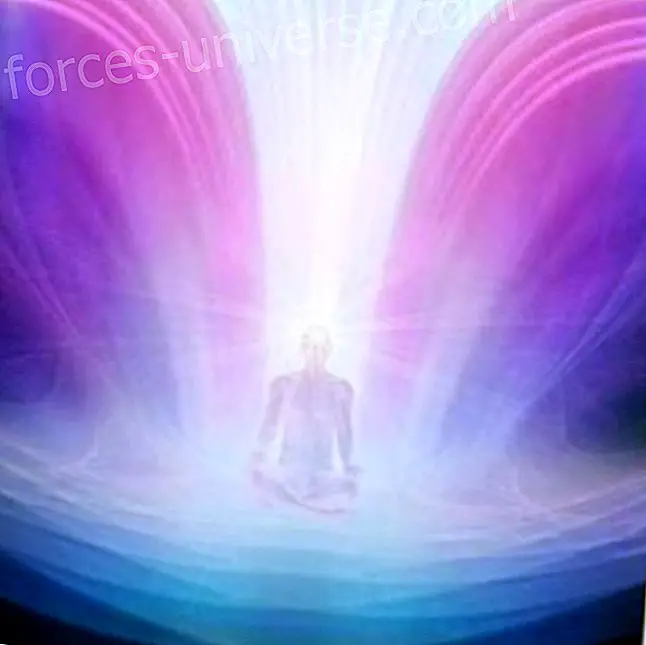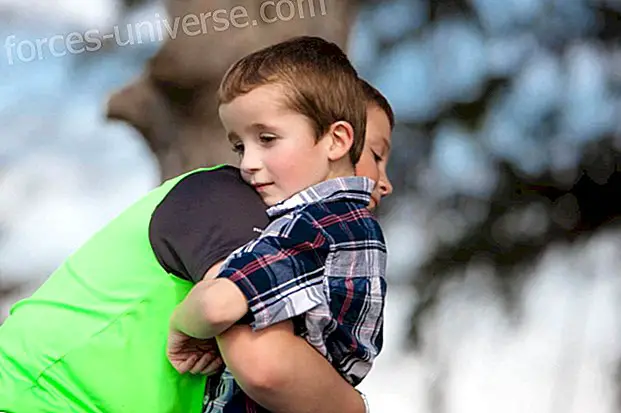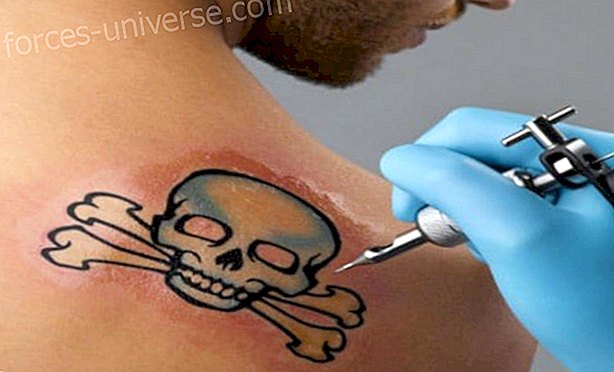
Reiki, recognized by WHO, consists of channeling energy with the hands. It is a common technique in more than 1, 000 hospitals in the US and United Kingdom
Anyone can learn to give reiki after a simple initiation course
What is a reiki session like? Who gives them? What is the healing crisis?
When something hurts, the stomach or a tooth, we automatically put our hand to that place as if simple contact relieved the pain. Naturally, without realizing it, we apply the foundation of reiki, a millenary Japanese therapy to heal through the hands that are increasingly adept in Europe. The people who practice it say it is amazing how it works and many claim that it has changed their lives. Even conventional medicine, always skeptical of this type of alternative techniques, has already begun to teach it in hospitals.
Reiki, which in Japanese means 'universal energy', consists in channeling through the hands a powerful source of vibration, which is outside, towards oneself or towards other people to cure physical illnesses or heal emotions. In addition, anyone can practice or receive it, since it is not a special 'gift' reserved for the privileged, but a technique that can be learned.
“Reiki is available to anyone, everyone can do it and it is always for good”
John Curtin, Reiki Master
Although this practice of channeling energy is more than 3, 000 years old, it was almost forgotten until it was rescued in 1920 by Dr. Usui, a Japanese monk and professor who is considered the first reiki master.
Like acupuncture or shiatsu, this technique starts from a very simple thesis: that the human being is "all energy", a statement that although it seems very esoteric shares aspects with quantum physics. Reiki argues that when energy is blocked, for any reason, it is when a disease occurs. The imposition of the hands in the encysted zone, where the energy has been clogged, serves to dissolve that 'knot' that prevents the energy from flowing and thus return the balance to the organism.
“Reiki is a very powerful tool that is available to anyone. Nothing special is needed, everyone can do it. In addition, it has no contraindications because it is always for good, ”says John Curtin, reiki teacher and president of the Sauce Foundation, where more than 6, 000 students have already been trained in the courses he teaches to be trained in this technique.
[Youtube
Curtin ran into reiki more by necessity than by conviction. Years ago, when he was running a computer company, he suffered a facial paralysis that left one side of his face unusable. The neurologists told him that he had no cure and that he would stay that way for life. After trying everything, he started receiving reiki and in three months he regained the mobility of his face completely. “As a computer scientist, I was very skeptical about this type of therapy, but I experienced the results in me. I always say that the important thing is not whether you believe it or not, the important thing is that reiki works, ”explains Curtin.
Therapy in hospitals
Reiki is not only compatible with any medical treatment, but also acts as a complement, since in no case it is recommended to suspend any medication to replace it with this technique. In addition, it is recognized as an alternative therapy by the World Health Organization (WHO). In fact, in the United States and the United Kingdom it is already used in more than 1, 000 hospital centers and is included in the Public Health System. In New York State, even emergency services are trained to give reiki.

In Spain, where this therapy still takes a few years of development, it has not yet been so far, but it is already applied in several hospitals such as Gregorio Marañón or La Paz thanks to the good results that have been observed in patients. "We have collaboration agreements with five hospitals in Madrid to apply reiki to patients, " says Curtin. The foundation he directs has more than 300 volunteers who lay hands on the sick to relieve their pain.
Among others, many cancer patients receive reiki sessions, as it has been used successfully in combination with chemotherapy to help the body maintain the physical strength necessary to support the treatment. “I learned reiki to help my aunt who has cancer. Now he tells me he feels better after giving him a session. I know that from the outside it seems crazy, but it is amazing, ”explains María Jesús.
His followers say that reiki serves to heal an endless list of diseases, both physical and emotional. Thus, they affirm that their "habitual practice" can relieve and even cure chronic pain such as arthritis, rheumatism or migraines. Also accelerate the recovery of bone and muscle injuries, help the body fight infections or mitigate stress and anxiety.
Against depression
The practice of the laying on of hands also fights against the disease of the 21st century: depression. "As their goal is to balance the person energetically both physically and spiritually, these types of psychic ailments disappear when the person returns to their state of equilibrium, " explains Curtin.
"There are no sick bodies, there are sick souls, " says a maximum reiki
This is the case of Candela, a flight attendant who suffers from depression and has been medicated for years without obtaining any improvement. He went to see John Curtin to receive a treatment, which consists of a minimum of three reiki sessions, because a friend had recommended it. “I understood that my depression came from an emotional block and the reiki sessions helped me to release that anguish contained. I felt like a ball in my throat and another in my chest that prevented me from breathing. Gradually that ball that I even physically noticed has been dissolving and now I hardly take any medication, ”explains Candela.
Like all oriental techniques, reiki treats the person as a whole. That is, it does not distinguish between body and spirit. There is a maximum of this technique that says that there are no sick bodies, there are sick souls. Thus, the teachers maintain that the ailments do not occur in isolation, but as a consequence of the imbalance between soul and body.
Manuela Gonz lez is also dedicated to giving reiki sessions. He assures that the force that comes out of his hands - she is just a channel - the only thing he does is restore order, because there are times when the energies are in civil war. . Many people come to your office to give you a shot of energy, as Jos Mar a, marketing director of a website, laughs or laughs. ailments of a rheumatic disease, in the case of Mar a, journalist.
Autoanamos, is a natural capacity that we all have
Manuela Gonz lez Y ez, reiki teacher
When we feel bad, dissatisfied, physically or emotionally ill, reiki therapy helps us recognize our essence and what we need to modify, which may not match what we want, to remain in a state of Cheers, explains Gonz lez, reiki teacher for the Reiki Service Association.
Reiki masters defend the amazing power of self-healing of the human being that is lost over the years. In short, we self-authorize, that it is a natural capacity that we all have and that with the help of a reiki master we begin to rediscover, says Gonzalez. Thus, Curtin agrees that it is the patient who takes the reins of his own healing.
Without ideological linkage
As energy therapy, reiki is not linked to any ideology or religion. In fact, the Catholic Church has reiki teachers among its members. Not surprisingly in the New Testament it is reported how the apostles performed miracles by imposing hands to heal in the name of Jesus. They change the way they say it but not the meaning: where Japanese tradition speaks of the universal energy of life, Catholics say God. He is not incompatible with the Catholic faith, for me it is God who heals. In fact, I opened the reiki session with a Hail Mary, explains Sr. Margarita, a nun who studied reiki as a tool to relieve the most disadvantaged. Moreover, John Paul II himself gave the blessing of Sr. Mariusza, a Polish nun and a Reiki teacher for her work in the Posjonistek Congregation.
Those who practice it ensure that the more you do reiki, the better you feel. And is that discovering that your health and happiness are at your fingertips, never better, changes everything. Although many still resist believing that power is in the palm of their hand.
What is a reiki session like?
A reiki session usually lasts 45 minutes. The patient lies on a stretcher in a quiet environment while the teacher puts his hands in different areas of his body. There are twelve positions of hands, it starts with the head (neck) and ends with the soles of the feet, rebalancing all energy centers or 'chakras'. During the session, it is usual to close the eyes because it is normal for the patient to fall asleep or go into deep relaxation. After the treatment, it is recommended to drink a lot of water and be very attentive to the changes that happen in the body.
Who can give reiki?
Everyone can do it. We must not have any special conditions. Although it is necessary to do a simple course that lasts a weekend in which through a rite of initiation the “channel is opened” through which you become an energy transmitter. In Level I, some basic notions about the technique of laying on hands are taught. Upon completion, you receive a diploma and the necessary information to give reiki sessions to other people and even yourself.
They must spend a minimum of six months to start Level II, whose complexity is increased and in which for example you learn to heal from a distance or dissolve past situations. Then he is followed by level III and IV, and finally, the teacher's course. Reiki mastery is transmitted by the teacher directly. Each teacher can start other people at different levels. Currently, there are approximately 15, 000 reiki teachers in the world and their practice grows continues to grow.
Healing crisis
It is normal for what is called the 'healing crisis', a temporary worsening of the same symptoms that are treated. “It is a process whereby the body is released from toxins and everything that was bothering it. The important thing is that it is temporary and that once the crisis is over, the person feels better than before the treatment, ”explains Curtin.
http://www.elmundo.es/elmundo/2011/11/04/tendencia/1320419777.html






